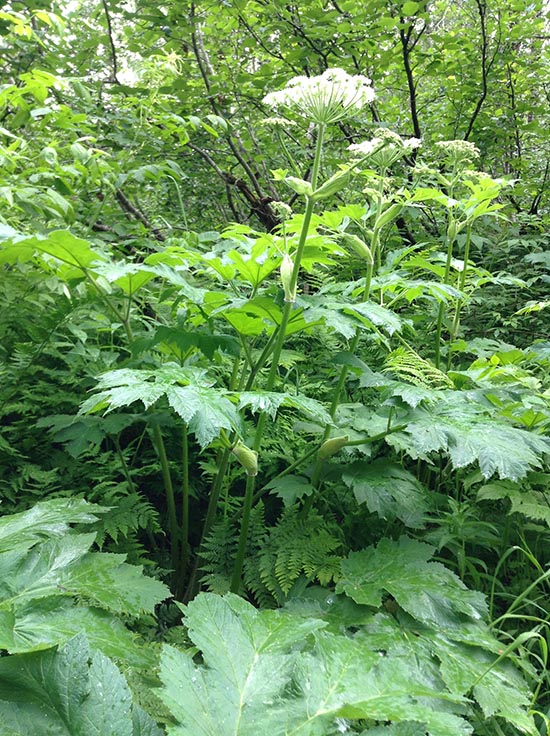Cow parsnip, also known by the Russian name Pushki, is found in moist fields, woodlands and alpine meadows. It is recognizable by its large segmented leaves and the white flowers growing in an umbrella-like cluster at the top of the plant. This plant is found along the trails at Exit Glacier (in Kenai Fjords National Park) as well as along the nearby highways.
***IMPORTANT*** Pushki has a chemical that can cause sensitivity, itching and burns. These injuries are photosensitive and can last up to a year. Please be extremely cautious when handling this plant. Please wash well and verify that you correctly identify any plant harvested. Other plants may be harmful to your health. Plants along roadways or other areas with pollution or pesticide should not be eaten. (Also note that plants cannot be harvested in Kenai Fjords National Park.)
Interesting uses for cow parsnip: The hollow stem was used in many ways by various Native American groups. It was used as a straw to inflate the seal stomach container. It was also a child’s popgun or a bow and arrow target. The roots can be used to reduce swelling, aches and pains. After a pad of small roots is created, the pad is crushed and heated then placed on the affected area. Dried roots can be used for nausea and stomachaches.
Can cow parsnip be eaten? The peeled young stems and the upper segment connecting to the flower can be used a celery substitute. To eat they need to be boiled and the water replaced up to 7 times. This process removes photosensitive chemicals and creates a milder taste. The buds can be dried and used as a spice.

